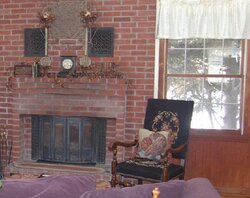Hi,
I have a Jotul system 18 which is a wood fireplace insert. An inspector noted "possible corrosion" in the original liner (8" SS) so they jammed a smaller 7" dia. liner (corrugated SS) inside it. The new liner is friction fitted and there is a small amount of airspace between the old one and new one. I don't like this and now fires seem to emit smoke into the room -total height is about 10 1/2 ft from cone to top. Is the liner too small? How much would it cost (ballpark) to rip out the original liner (there are granite stones and morter up to the top and all around) and replace it with a new one. The unit is about 21 years old. Or do I just use the original one? How do I see if "possible corrosion" is "actual corrosion"
Thank you in advance
I have a Jotul system 18 which is a wood fireplace insert. An inspector noted "possible corrosion" in the original liner (8" SS) so they jammed a smaller 7" dia. liner (corrugated SS) inside it. The new liner is friction fitted and there is a small amount of airspace between the old one and new one. I don't like this and now fires seem to emit smoke into the room -total height is about 10 1/2 ft from cone to top. Is the liner too small? How much would it cost (ballpark) to rip out the original liner (there are granite stones and morter up to the top and all around) and replace it with a new one. The unit is about 21 years old. Or do I just use the original one? How do I see if "possible corrosion" is "actual corrosion"
Thank you in advance


 I am discovering other things with this house, done with the same lack of workmanship.
I am discovering other things with this house, done with the same lack of workmanship. 